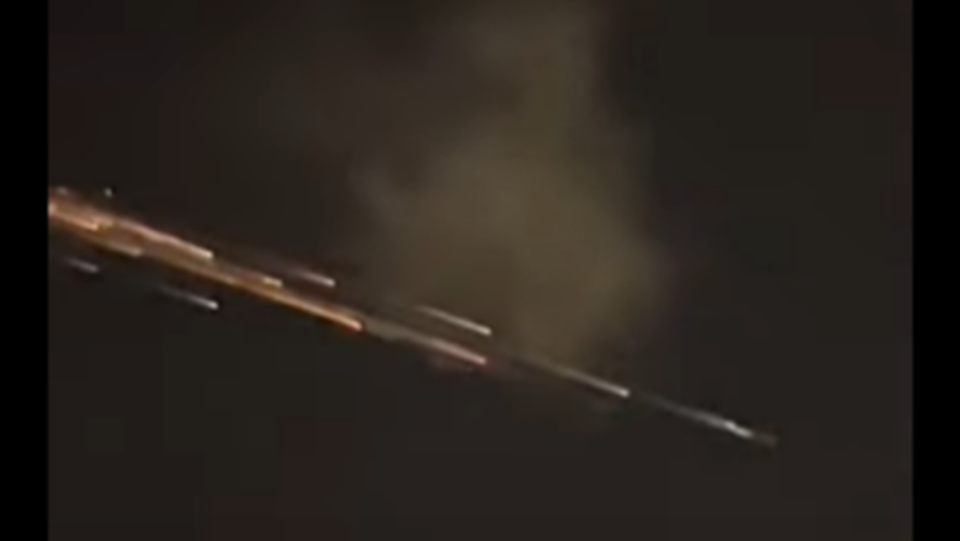Videos show cluster of fireballs flew over Florida. It was not a meteor, experts say
Spring break briefly turned scary in Florida when multiple streaks of fire were recorded soaring across the night sky.
The phenomenon appeared late Thursday, March 23, and some admit suspecting it might be an aircraft on fire.
Other witnesses have assumed it was a rare cluster of plummeting meteors, known as fireballs, but the American Meteor Society says that’s not the case.
“This was not a fireball,” the society reports. “It was most likely the re-entry of a Starlink satellite (Group 5-2) that was launched on January 26, 2023 from Cape Canaveral, FL.”

Fifteen witness reports have been filed across a 440-mile swath of Florida, from Big Pine in the Keys north to Homosassa in Citrus County, the society says.
Videos — including one recorded at a party — show streak of light appeared around 10:30 p.m. and took the form of fire raining from the sky. Witness reports indicate it was moving north, across the middle of the state, experts say.
“First just a large ball with a thick trail behind it. ... Then it looked like fireworks. A series of smaller orange balls,” a witness in Palm Beach Gardens wrote.
“Thought it was possibly a plane on fire, but when it got directly in front of me I knew it wasn’t a plane,” a man in Big Pine Key said.
“It appeared to me that it was something breaking up in our atmosphere,” a man in Royal Palm Beach posted. “There was long glowing orange streaks. You could also see small dots leading the streaks.”
At least one witness reported a “rushing sound like a blasting through wind.”
Starlink has not confirmed the display was related to one of its satellites.
The AMS says an average of 20,000 fireball reports are received each year. Fireballs are defined as “a very bright meteor” and those that explode are known as a bolide.
Fireballs enter the atmosphere at speeds of 25,000 mph to 160,000 mph, and the color of the flame (blue, red, orange) depends on the composition of the meteoroid, the society says.
Odd asteroid as big as Empire State Building passes Earth. Here’s why NASA tracked it
Satellite shows ocean sparked as nor’easter formed off North Carolina’s Outer Banks
‘Worst-case scenario’ dodged by 19 feet in near collision of big space debris, lab says


